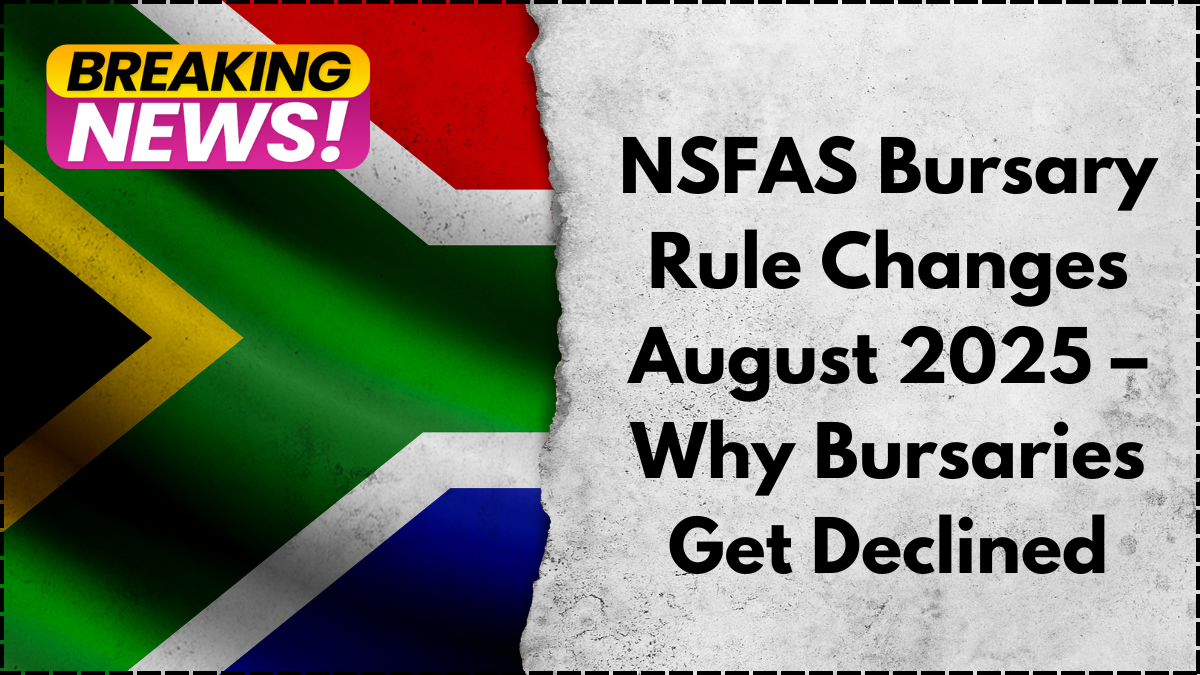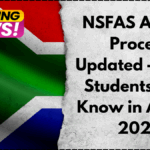The NSFAS Bursary Rejection Reasons 2025 have become an important topic for students relying on government financial aid to complete their education. Each year, thousands of students apply for NSFAS funding, but not all applications are approved. Understanding why some bursaries get declined and how to respond is critical for students who need financial support.
The updated system now provides clearer explanations and steps for NSFAS bursary decline appeals, giving students the chance to fix issues and reapply successfully.

Why Bursary Rejections Happen
The NSFAS Bursary Rejection Reasons 2025 list highlights several common issues that lead to denial. These reasons are often linked to missing documents, incorrect information, or ineligibility.
Key rejection reasons include:
-
Incomplete or inaccurate applications
-
Household income above the threshold
-
Academic performance not meeting requirements
-
Missing proof of enrollment or identity documents
By addressing these issues early, students can reduce the risk of rejection and avoid the frustration of filing NSFAS bursary decline appeals later.
Key Changes to the Rules in August 2025
New rules were introduced in August 2025 to clarify and streamline the process. These changes have a direct impact on the NSFAS Bursary Rejection Reasons 2025 and how appeals are handled.
| Rule Change | What It Means |
|---|---|
| Stricter Income Verification | More rigorous checks on declared household earnings |
| Faster Rejection Notices | Students receive updates sooner to allow for timely NSFAS bursary decline appeals |
| Clearer Document Requirements | Specific lists of what documents must be submitted |
| Improved Appeal Channels | Online portal for appeals made easier to use |
These updates aim to make the funding system more transparent while ensuring bursaries go to the students who truly qualify.
How to File an Appeal if Your Bursary Is Declined
Students who receive a rejection should not panic. The system now makes NSFAS bursary decline appeals straightforward if you act quickly.
Steps to follow:
-
Log into the NSFAS portal and locate the appeals section
-
Fill in the appeal form explaining why the rejection should be reconsidered
-
Upload missing or corrected documents, including proof of eligibility
-
Submit before the deadline to ensure the appeal is processed
Addressing the specific NSFAS Bursary Rejection Reasons 2025 in your appeal increases your chances of success.
How Students Can Avoid Rejections
The best way to handle NSFAS Bursary Rejection Reasons 2025 is to avoid them altogether. Students can take proactive steps before applying or reapplying for bursaries.
-
Double‑check all information before submission
-
Provide certified copies of all required documents
-
Maintain academic performance to meet eligibility criteria
-
Ask for guidance if unsure about documentation or income declarations
Doing this will reduce the need for NSFAS bursary decline appeals and speed up funding approval.
Conclusion
The NSFAS Bursary Rejection Reasons 2025 highlight the most common mistakes that lead to denied funding. With the new rules in August 2025, students now have a clearer path to fix errors through NSFAS bursary decline appeals. By preparing properly and following the process, students can secure the financial aid they need and avoid future rejections.
FAQs
What are the most common NSFAS Bursary Rejection Reasons 2025?
Common reasons include incomplete applications, income above the threshold, and missing documents.
Can I appeal if my bursary was rejected?
Yes, you can file NSFAS bursary decline appeals if you provide corrected documents and valid reasons.
How long does the appeal process take?
Most appeals are reviewed within two to four weeks if submitted properly.
Are the new rules in August 2025 stricter?
Yes, but they also make the process clearer, giving students better guidance for NSFAS bursary decline appeals.
Can rejection reasons be fixed for next year’s application?
Absolutely. By understanding the NSFAS Bursary Rejection Reasons 2025, students can correct issues before reapplying.
Click here to know more.



